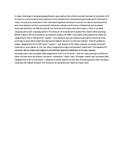Alley cropping of maize with calliandra and leucaena in the subhumid highlands of Kenya: Part 2. Biomass decomposition, N mineralization, and N uptake by maize

View/
Date
1999-06Author
Mugendi, DN
Nair, PKR
Mugwe, JN
O'Neill, MK
Swift, MJ
Woomer, P
Language
enMetadata
Show full item recordAbstract
A major challenge in developing agroforestry approaches that utilize tree-leaf biomass for provision of N to crops is to ensure synchrony between the N released from decomposing prunings and N demand by crops. A study was conducted in the subhumid highlands of Kenya to assess the rate of decomposition and mineralization of soil-incorporated Calliandra calothyrsus Meissner (calliandra) and Leucaena leucocephala (Lam.) de Wit (leucaena) tree biomass and maize roots (Zea mays L.) both in an alley cropping and a sole cropping system. The amount of mineralized N peaked four weeks after planting (WAP) maize in all the treatments during both seasons of 1995. Cumulative mineralized N at week 20 ranged from 114 to 364 kg N ha−1 season−1, the absolute control treatment giving the lowest and the prunings-incorporated treatments giving the highest amounts in the two seasons. Total N uptake by maize, ranging from 42 to 157 kg ha−1 season−1, was lowest in the 'alley-cropped, prunings-removed' treatments, and highest in the 'non alley-cropped-prunings-incorporated' treatments. The apparent N recovery rate by maize was highest in the fertilizer applied treatments in the two seasons. Decomposition rate constants (kD) ranged from 0.07 to 0.21 week−1, and the rates among the different plant residues were as follows: leucaena < calliandra < maize roots. Nitrogen release rate constants (kN), ranging from 0.04 to 0.25 week−1, followed a similar pattern as the rate of decomposition with leucaena releasing the highest amount of N followed by calliandra and lastly by maize roots.
Citation
Agroforestry Systems June 1999, Volume 46, Issue 1, pp 51-64Publisher
University of Nairobi
